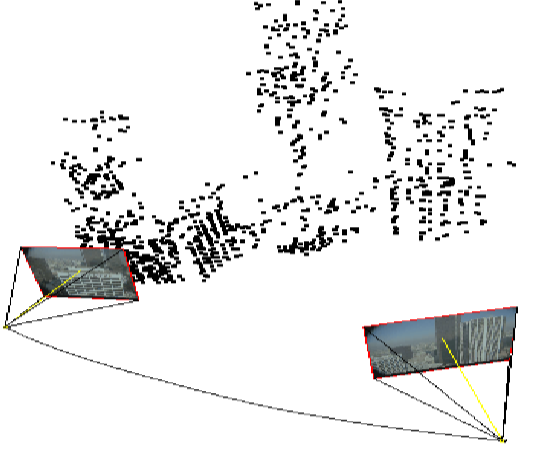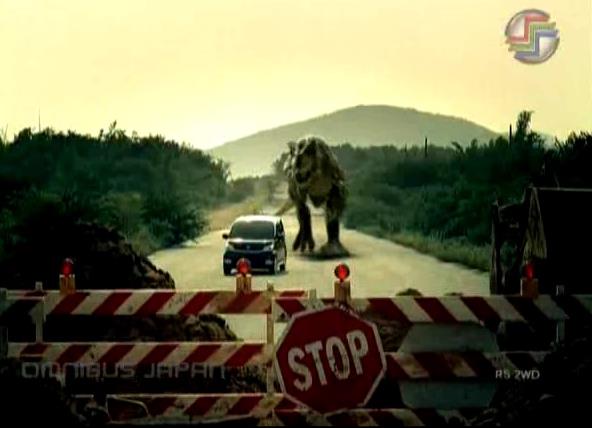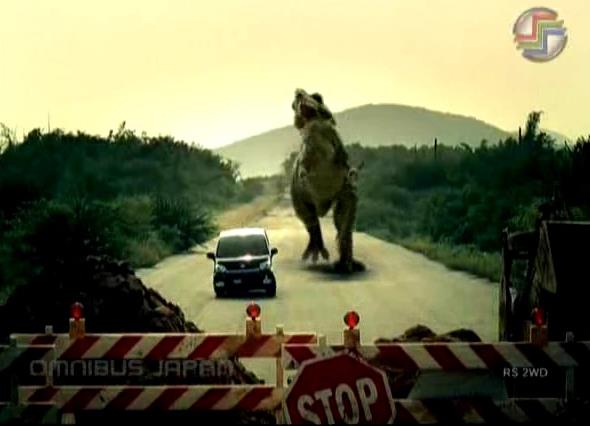UOA15-10: Boujou: special effects software for the film industry
Submitting Institution
University of OxfordUnit of Assessment
General EngineeringSummary Impact Type
TechnologicalResearch Subject Area(s)
Information and Computing Sciences: Artificial Intelligence and Image Processing
Summary of the impact
The Boujou special effects software was developed from research carried
out at the Department of Engineering Science. It enables sophisticated
computer generated imagery (CGI) to be quickly and easily added to `real'
film footage, facilitating the visual effects that feature so importantly
in films such as Harry Potter and X-Men. The software has become an
essential tool used by film-makers, TV advert producers, and video game
manufacturers, and for instance played a pivotal role in helping `The
Curious Case of Benjamin Button' win the 2009 Oscar for Best Visual
Effects. Between 2008 and 2013, sales of Boujou totalled £1.37 million and
this software boosted productivity and profitability right across the
global digital entertainment industry.
Underpinning research
The research that underpins this revolutionary `move matching' software
was carried out between 1995 and 1999 by Prof. Andrew Zisserman, FRS (who
joined the Department in 1987 as an EPSRC Advanced Research Fellow and is
now Professor of Computer Vision Engineering). Between 1999 and 2001, he
and his team built software libraries to tie in with Boujou's release onto
the market.
- Move matching is a technique that enables `real' film footage to be
enhanced by special visual effects. It does this by taking into account
the changing perspective that inevitably occurs whenever a camera moves
around during the filming of a sequence. Prior to Boujou's development,
move matching involved a painstaking (and costly) manual process.
Alternatively, special camera equipment or calibration objects were needed
— which was also an unattractive, expensive option. Working in the field
of multiple view geometry, Zisserman devised a practical, affordable
solution to the problem by developing (i) a theoretical understanding of
how the geometry of multiple views works and (ii) software algorithms
capable of calculating 3D geometry from multiple 2D images automatically,
rapidly and using only a PC or laptop.
- In 1995, Zisserman and his team were working on guidance techniques for
robots, exploring how the 3D geometry of a scene could be calculated from
a stream of 2D images. A mathematical model was constructed that could
relate multiple 2D images to one other, regardless of whether they
comprised a sequence that had been shot by a single camera or produced by
a number of different cameras [1].
 A scene's 3D geometry can be calculated from multiple 2D images. The
figure illustrates this by showing thousands of separate 3D points,
estimated using the Boujou method, from 350 frames shot by a
helicopter-mounted camera. (Camera position is shown only for the first
and last frames, with the camera's path plotted between the two.)
A scene's 3D geometry can be calculated from multiple 2D images. The
figure illustrates this by showing thousands of separate 3D points,
estimated using the Boujou method, from 350 frames shot by a
helicopter-mounted camera. (Camera position is shown only for the first
and last frames, with the camera's path plotted between the two.)
- The research then addressed how the mathematical relationship between
multiple 2D images could be estimated from real data, tackling the many
measurement errors (e.g. missing data, mismatched image points)
that contaminate the system. This was achieved by detecting outliers, and
building a robust estimation computation. One crucial step involved
changing video processing from sequential (i.e. solving for each
frame, given the solution for the previous one) to batch (i.e.
solving for all frames simultaneously); with this latter approach removing
many of the problems previously encountered [2].
- The research then focussed on how the software could be used `in the
wild', by identifying ways of overcoming problems arising with certain
types of video sequences and 3D configurations [3]. This represented the
critical move that transformed the original research software into a move
matching version fit for real-world use: `Boujou'. The team went on to
develop MLESAC [4], an algorithm for estimating multiple view geometric
relations and a significant improvement over the standard RANSAC method
previously used.
- The theoretical understanding developed in the course of the research,
together with the algorithms for automatically estimating 3D geometry from
multiple 2D images, were set out in a book first published in 2000 [5]; a
second revised (paperback) edition followed in 2004.
Members of the team that developed the software also included: Paul
Beardsley, Research Assistant 1995-1996; Andrew Fitzgibbon, Research
Assistant 1995-2005; and Phil Torr, Research Assistant 1995-1997 and now
Professorial Research Fellow at Oxford University.
References to the research
(best indicators of research quality are marked `Q')
3. Torr, P.H.S., Fitzgibbon, A.W. and Zisserman, A. `Maintaining Multiple
Motion Model Hypotheses through Many Views to Recover Matching and
Structure' (1998). IEEE 6th International
Conference on Computer Vision, pp 485-492. http://www.robots.ox.ac.uk/~vgg/publications/1998/Torr98a/torr98a.pdf
`Q' This paper was awarded the IEEE Marr Prize, the
principal prize in the computer vision field.
5. Hartley, R. and Zisserman, A. `Multiple View Geometry in Computer
Vision' (2000), Cambridge University Press, ISBN: 0521540518 (2nd
Ed. 2004). `Q' This book is now the standard reference work
on multiple view geometry in computer vision literature, being on the
reading list for many computer vision courses and accruing thousands of
citations.
Grants in support of this research: (Principal
Investigator: Prof. Andrew Zisserman)
• EC ACTS: VANGUARD, 1995-1999, ECU 591,000 (Oxford component) (ref:
AC074).
• EPSRC LINK: 2000-2003, £265k (refs: GR/M82790/01).
Details of the impact
Boujou was the first automatic camera tracking system developed
worldwide, and has delivered a step change in the way that visual effects
are incorporated into films, adverts, games, TV programmes and other
environments where virtualisation plays a core role.
Societal Impact — quicker, cheaper production of more convincing
special effects
By eliminating the need to rely on ponderous, expensive ways of computing
a camera's movement, Boujou has made it simple and affordable to add
sophisticated computer graphics to film: "on long, complex shots, using
Boujou can cut two to three weeks off the completion time" [6(a)]. The
software won a Technical and Engineering Emmy in 2002 [7] for its
"revolutionary impact on the creation of complex visual effects". Since
then, it has established itself as the preferred software for numerous
film and visual effects companies and is used on almost every cinema film
with CGI content. Key examples in the period 2008 to 2013 include:
| Film |
Awards/quotes |
| The Curious Case of Benjamin Button (2008) |
[2009] Oscar for Best Visual Effects [8]. |
| Tropic Thunder (2008) |
Visual Effects Supervisor, CIS Vancouver [9]: “There were around
110 shots that required tracking. There was one shot in particular
with Robert Downey Jr. coming in via helicopter and it crashes. The
final edit looks seamless. Boujou has always been my weapon of
choice |
| Angels and Demons (2008) |
Nominated for a Visual Effects Society award in 2010. |
| Harry Potter and the Deathly Hallows Part 1 (2010)
& Part 2 (2011) |
Both won Oscars for Best Visual Effects. Part 2 also
won a Best Special Visual Effects BAFTA. |
Boujou's ubiquity is also reflected in its extensive use by individuals
making their own films. Videos from all over the world acknowledge its
contribution (see http://vimeo.com/tag:boujou)
and many YouTube videos show how to use it (e.g.
http://www.youtube.com/watch?v=7PsGdjwht_A). In addition,
Hollywood's Gnomon School of visual effects offers professional training
for users (see teaching DVDs for sale at http://www.robots.ox.ac.uk/~vgg/publications/2000/Torr00/torr00.pdf).
Economic Impact — commercial success and wealth creation
Software libraries developed as part of the underpinning research were
licensed to 2d3, a company created in 1999 by Vicon (part of the Oxford
Metrics Group) to sell Boujou to the film industry. In 2009, Vicon took
over direct ownership of Boujou and, to date, has secured £1.37 million in
revenue through sales of 654 licences for the software [10], purchased by:
- Post-production companies in the film and advertising industries, with
Boujou making a key contribution to a 2009 Kleenex advertisement, for
instance [11].
- High-profile television companies such as the BBC and CNN [10].
- Companies active in the computer game and architectural markets, e.g.
Ubisoft and EA Games.
- Universities, where it has been used as a teaching tool, in sectors
outside science and engineering, e.g. the Univ. of York, Dept. of
Theatre, Film and Television http://www.york.ac.uk/tftv/about/building-facilities/equipment/;
Florida State Univ., College of Motion Picture Arts http://film.fsu.edu/About/Facilities/Visual-Effects-Lab.
The commercial benefits of using Boujou, have continue to affect the
worldwide entertainment industry. By using it, special effects sequences
have become cheaper to produce and therefore much more ubiquitous,
enhancing the entertainment value of films, TV shows etc., and
translating into increased audiences and higher profits. Endorsements
include:
- "We are constantly amazed at what Boujou is able to track. In fact, it
has become a verb in the jargon at Ring of Fire: `Let's Boujou it!'"
[6(b)].
- "Ease of use is a hallmark of Boujou, yet the software can do
incredible things. The beauty of the application is that it just does what
it needs to do: produce a moving camera from film or video without the
need for the artist to track input manually" [6(c)].
- "Every 3D project that comes here, including Benjamin Button, starts
with Boujou in our tracking department. Once shots are tracked, we can
export cameras into Maya and use those 3D cameras as if we were on set
with the director" [12].

 Outrunning a dinosaur! Without Boujou, striking sequences like this
(from a 2008 Daihatsu advert) would cost more to produce and so would be
less common.
Outrunning a dinosaur! Without Boujou, striking sequences like this
(from a 2008 Daihatsu advert) would cost more to produce and so would be
less common.
Sources to corroborate the impact
-
http://www.awn.com/articles/technology/lets-boujou-it/page/3,1.contains
three statements (a) CG Supervisor for The Orphanage Inc. corroborates
that Boujou can cut production time, (b) Senior VFX Producer on `Ring of
Fire' (2013 film) and (c) CG Artist, Zoic Studios both corroborate the
impact Boujou has had within the film industry.
- Article on Technical and Engineering Emmy in 2002. http://www.awn.com/news/awards/2002-
engineering-emmy-awards-2d3s-boujou-and-apples-finalcut-pro
- Use of Boujou on `The Curious Case of Benjamin Button' see:
http://www.vicon.com/Content/PDFs/CCBB.pdf
and
http://www.omg3d.com/news/2009/88/boujou-helps-hydraulx-create-seamless-effects-for-the-curious-case-of-benjamin-button
- Use of Boujou on `Tropic Thunder' see: http://www.metrics.co.uk/boujou/contact/101309.html
- Chief Executive of Oxford Metrics Group (OMG), the holding company for
2d3 and Vicon. Corroborates the sales that Boujou has generated.
- http://press.trustcollective.com/uploads/client_placements/rhino-3dworld_kleenex_PRINT_10.6.09.pdf
- Lead Camera Tracker, Hydraulx, who worked on `The Curious Case of
Benjamin Button'. Corroborates the impact Boujou has had within the film
industry.